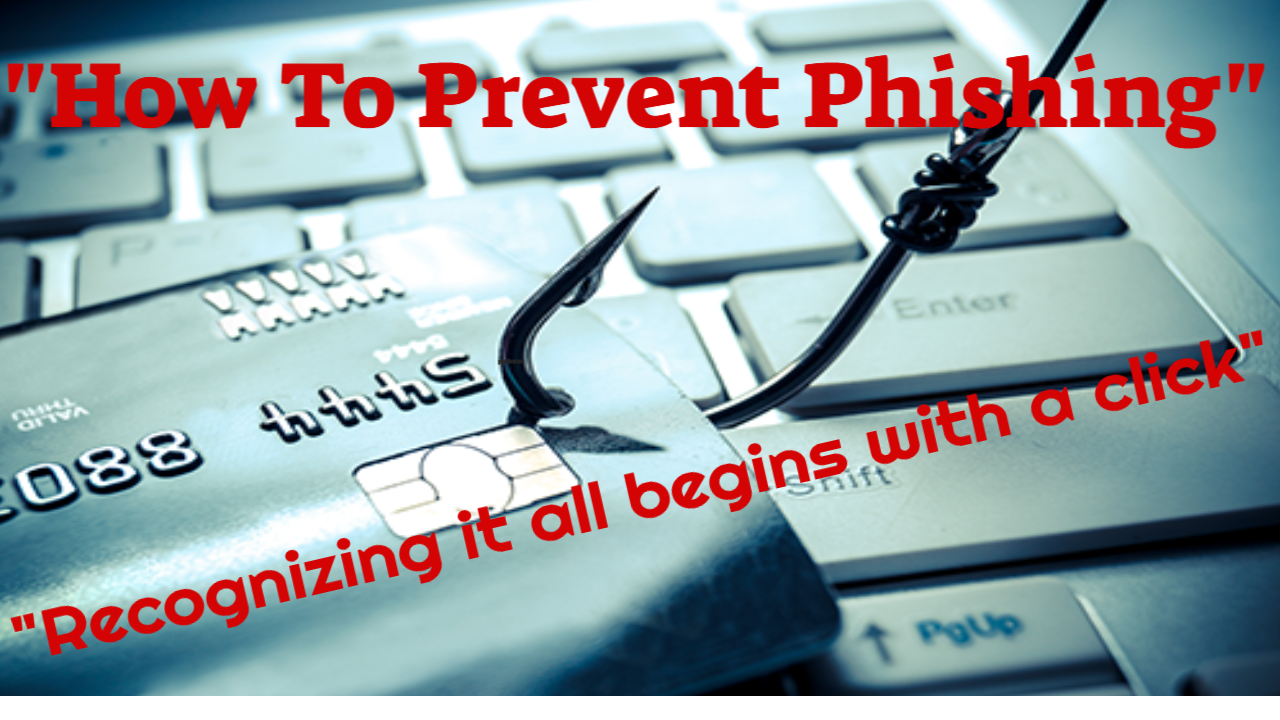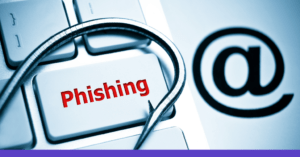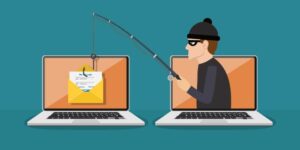What is Phishing and How the Scam Works
Before we go into how to avoid phishing, let’s clarify what it is and how it works in general.
A phishing scam is a type of fraud that can take many different forms. These frauds use a range of online strategies, including phishing emails, pop-up advertising, and phone calls. Scare tactics are commonly used by perpetrators of these frauds to entice their victims to bite the bait.
Phishing is a type of online con game in which con artists and identity thieves use technology to steal people’s identities. They deceive users into disclosing critical information by using spam, phoney websites, email messages, and instant chats. Phishers are targeting banking information, credit card accounts, usernames, and passwords, to mention a few.
Phishing is a type of cybercrime that is quite widespread. Phishing is one example of a social engineering attack. An individual’s identity is stolen via getting login information and other non-public information, such as credit card numbers, over email.
One of the most noticeable aspects of phishing is the element of surprise, which comes in the form of emails. These emails are usually delivered at an inconvenient moment for the victim. Scammers are well aware that paying attention to strange emails is impossible all of the time.
According to the FBI Cybercrime Annual Report for 2021, phishing assaults accounted for 32.35 percent of total cyberattacks in the previous year, with 241,342 phishing attacks.
This report has the most attacks in the last five years, with 19,465 attacks in 2015.
As a result, you must understand how to avoid phishing emails and how to avoid phishing in general.
The 10 Most Common Vintage Phishing Examples
Here’s a compilation of old-school phishing scams we’ve come across over the years.
As you can see, hackers employ a diverse set of approaches that are always changing. While having a whole library of these examples would be very impossible, staying up to date on what’s out there to stay up to date on ‘how to prevent phishing’ is a good idea.
1. Email Phishing Scams
An email phishing scam is a fraudulent email communication that appears to be from a person or firm the victim knows. It makes an unauthorised attempt to get personal and/or financial information from the recipient.
A phishing communication will typically include at least one link to a bogus website that appears to be that of a genuine company. The letter encourages the recipient to give personal information that could be used for online identity theft or financial crime.
Phishers have been discovered spoofing legitimate firm logos in their contact. They also employ forged email addresses that look to be identical to the actual company’s address. The address, on the other hand, could be misspelt or originate from a fraudulent domain.
2. Scams Based on Vishing
Vishing is the audio counterpart of email phishing (also known as voice phishing or VoIP phishing). It’s a phone scam in which victims are duped or coerced into giving crooks sensitive financial or personal information. Despite the fact that the letter “V” stands for voice, the procedure stays the same.
Vishing works by convincing victims that responding to the caller’s request is the proper course of action. The caller usually pretends to be from a government entity, such as the IRS, the police, or the victim’s bank.
Threats and persuasion are used by cybercriminals to convince victims that they have no choice but to supply the requested information.

3. Phishing on Mobile Devices (Smishing)
A phishing SMS, social media message, voice mail, or other in-app contact requests that the receiver update their account information, reset their password, or notify them that their account has been compromised.
The message contains a link that can be used to steal the victim’s personal information or infect the mobile device with malware.
4. Scams Involving Cold Calls From Tech Support
Scams involving tech support cold calls occur when a fraudster calls a potential victim while impersonating a representative of a reputed security business.
After getting the user to install remote desktop software, they lie and claim to have discovered malware on the victim’s PC. With this access, the attacker can take control of the device and install malware.
In addition to attempting to install malware on the laptop, these fraudsters would frequently demand payment to “cure” the problem.
5. Scams Using Pop-up Warnings
When a person is browsing the web and notices a small graphic or advertising on their screen, a pop-up appears.
Pop-ups are usually relevant to the content being viewed and link to another website that provides similar content or commodities. Malicious pop-ups can be extremely annoying, leaving the user unable to close the pop-up window.
These pop-ups may display a message stating that the system has been infected with malware and providing a phone number for assistance in eliminating the virus.
Pop-ups that appear to be from a legitimate source are frequently used by cybercriminals.
6. Scams Involving Phony Search Results
Fraudulent businesses will occasionally employ sponsored search ads for their “help services,” masquerading themselves as reputable, well-known businesses.
These sponsored listings have the potential to appear at the top of a search results page, which is a desired position. These results, which may appear authentic, may make support claims that are far too good to be true in order to entice a victim whose primary concern is repairing their equipment.
Unfortunately, if you click on the ad, malware may begin to download to your device, jeopardising the security of your data and exacerbating your computer’s operational issues.
7. Delivery Via the Web
Web-based distribution is one of the most advanced phishing tactics.
The hacker, often known as the “man-in-the-middle,” is the individual who stands between the original website and the phishing system. The phisher obtains information between a legitimate website and a user transaction. The phishers gather data without the user’s knowledge as the user continues to communicate it.
8. How To Prevent Phishing – Don’t Be Duped by Fake Websites

Cybercriminals send phishing emails with links to phoney websites, such as a known mail provider’s mobile account login page, and instruct the victim to enter their credentials or other information into the interface of the bogus site.
As a deceptive strategy, the rogue website may utilise a tiny alteration to a well-known URL, such as mail.update.yahoo.com rather than mail.yahoo.com.
One click on an email attachment is all it takes to install malicious malware on a computer or network. These files appear to be genuine and can be disguised as funny cat videos, eBook PDFs, or animated GIFs.
10. “Evil Twin” Wi-Fi
When free Wi-Fi access points are impersonated, this is referred to as ‘evil twin’ Wi-Fi. Victims inadvertently connect to the incorrect Wi-Fi hotspot. Wi-Fi access points in coffee shops, airports, hospitals, retail malls, public parks, and other public gathering places are set up as faked access points by cybercriminals to collect data in order to carry out the spoof.
How to Prevent Phishing: Top Ten Crucial Points
Here’s a stat that will blow your mind. Phishing attacks grew by over 1,000% in 2021!
Phishing scams are among the most common types of cyberattacks worldwide, and they are on the rise. The unfortunate reality is that fraudsters are constantly devising new ways to exploit our data. They’re also performing better than they have in the past.
My top 10 recommendations for ‘how to avoid phishing’ are as follows:
1. Do Not Click That Link!
More advanced phishing attempts may approach you by name or masquerade as someone on the boundaries of your social network (such as a friend of a friend), an authoritative person or organisation (such as the police, IRS, or FBI), or an institution known to send a huge volume of mail (e.g., Google, Microsoft, or Netflix).
Whether the phishing effort comes in the form of an email, a text message, or a phone call, the sender will almost always ask you to click a link or visit a website URL.
If the sender is unfamiliar or the email appears out of character, do not click on a link or visit a website (i.e., your employer needs you to wire them funds asap, your next-door neighbour is in the hospital and needs you to visit the hospital webpage to fill in personal information, etc.).
If you suspect a phishing attempt, don’t click that link — this is my first and most important tip for avoiding phishing.
2. Never, ever, ever give out your personal information to anyone.
As a general guideline, never send personal or financial information over the internet. If in doubt, visit the company’s official website, seek up their phone number, and call them.
The great majority of phishing emails will drive you to pages that will request money or personal information from you. An Internet user should never provide critical information via email links.
Never send sensitive information to anyone via email. Make it a practice to check the website’s address twice. A secure website’s URL will always begin with “HTTPS.”
3. Add a Browser-Based Anti-Phishing Toolbar to your browser.
You can install anti-phishing toolbars in the majority of recognised web browsers. Anti-phishing toolbars scan websites you visit in real-time and compare them to lists of known phishing sites.
If you visit a potentially dangerous website, the toolbar will notify you. Anti-phishing toolbars provide an additional layer of security against phishing schemes and are completely free.
4. Verify HTTPS security.
Websites that do not employ an SSL/TLS certificate are not encrypted, much like a public network. Hackers can steal information when you speak with or interact with a website because there is no certificate.
The end consequence might be the same: a hacker could use this to launch a spear-phishing attack against you or people in your life.
A secure website’s URL begins with “HTTPS” rather than “HTTP.” Depending on your browser, you may also see a padlock or the phrase “secure” to the left of the URL.
If you’re using Chrome, you may check the status of the certificate by clicking on the padlock, or you can investigate the site by pressing Ctrl + Shift + I and then navigating to the security section.
5. Check your online accounts on a regular basis.
Someone else may be having a field day with your internet account if you don’t access it for a time. Check-in with each of your internet accounts on a frequent basis, even if it isn’t technically necessary.
Make it a habit to update your passwords on a regular basis. Check your statements on a regular basis to protect yourself from bank and credit card phishing frauds.
Examine your bank statements on a regular basis, going through each item carefully to ensure that no fraudulent transactions have occurred without your knowledge.
6. Always keep your browser up to date.
Popular browser security updates are provided on a regular basis. They are made available as a result of security flaws found and exploited by phishers and other hackers.
Download and install updates as soon as they become available. Stop ignoring browser update notifications.
7. Ensure that firewalls are in place.
High-quality firewalls operate as barriers between you, your computer, and intruders from the outside world.
There are two types of firewalls available: a desktop firewall and a network firewall. The former is software, whereas the latter is hardware. When used in tandem, they significantly limit the likelihood of hackers and phishers penetrating your computer or network.
8. Be Wary of Pop-Up Adverts
Pop-up windows are frequently disguised as necessary website components. All too often, though, these are phishing attempts. Pop-ups can be turned off in some main browsers and enabled in others on a case-by-case basis.
Don’t click the “cancel” button; these buttons frequently lead to fraudulent sites. Click the small “x” in the upper right corner of the window instead.
9. Use a VPN to protect your online privacy.
Public networks, such as those found in coffee shops, hotels, and other Wi-Fi hotspots, may constitute a serious security concern.
Hackers using the same public Wi-Fi network can intercept data that would otherwise be unprotected. The best solution for folks who work from public Wi-Fi is to use a VPN to keep themselves safe on the internet.

A Virtual Private Network (VPN) is a low-cost method of gaining privacy and security when accessing the web.
A VPN keeps your ISP and other third parties from seeing which websites you visit or the information you submit. Your IP address is masked by a VPN by routing it through a specially configured distant server operated by the VPN host. As a result, when utilising a VPN to connect to the internet, the VPN server becomes your data source.
A VPN operates as a filter, turning all sent and received data to gibberish. Even if this data could be recovered, it would be useless.
10. You’ll Need Commercial-Grade Antivirus Software
The increased protection and peace of mind gained by switching from free antivirus software to a full internet security solution is well worth the expense.
Enabling business-grade antivirus software is one of the most efficient phishing prevention strategies. Security software scans data that enters your computer via the internet. When a potentially harmful file is detected, the programme prevents it from being downloaded to your machine.
Commercial-grade security software assesses profiles of known threats and malicious file types to decide which are possibly dangerous to your machine.
Security software frequently requires regular upgrades to stay current. When new threats are recognised, their profiles are automatically incorporated in the update. They will be installed automatically by the supplier.
If you follow these suggestions, you will be well on your way to navigating your online experience.
How to Prevent Phishing | Sophos Enterprise-Level Web Protection
Sophos Home Premium was created by Sophos Limited, a British business that specialises in digital security, and it is my go-to for phishing protection.
Sophos Home is more than an antivirus programme. It safeguards you against the most recent and unanticipated online threats, such as malware, adware, keyloggers, phishing schemes, and fraudulent websites.
Sophos Home safeguards you against known and unknown dangers when you browse, bank, and shop online by providing complete ransomware protection for Macs and cutting-edge artificial intelligence for malware detection on PCs.
It protects your online experience by preventing hackers from stealing your credentials and gaining access to sensitive personal information by exploiting flaws and tactics.
Sophos Home’s powerful web defence ensures that you are not a victim of online fraud and that no online risks harm your PC or Mac.
Sophos Web Prevention offers superior web threat protection and contains the following features:
• URL filtering in real-time
• Downloaded content scanning
• Confirming the legitimacy of downloaded data
URL Filtering in Real-Time
Live URL filtering restricts access to malware-infected websites. This application works by searching Sophos’ internet database of compromised websites in real time.
When access to a malicious website is prevented, the incidence is noted in the scanning log.
Examination of the Content
Data and file examination, real-time scanning of data and files retrieved from the internet (or intranet) to detect potentially harmful material. This tool investigates content hosted anywhere, including locations not specified on the list of afflicted websites.
Download Verification
The download reputation is influenced by factors such as age, source, prevalence, extensive content analysis, and other factors.
How can you prevent phishing? Click here for more information on Sophos enterprise-level web security for PCs and Macs.
The post, How To Prevent Phishing – Acknowledging That It All Begins with a Click first appeared on https://websecurityhome.com
Brought To You By:
The post How To Prevent Phishing – Acknowledging That It All Begins with a Click appeared first on https://cable13.com
The post How To Prevent Phishing – Acknowledging That It All Begins with a Click appeared first on https://gqcentral.co.uk





Comments are closed